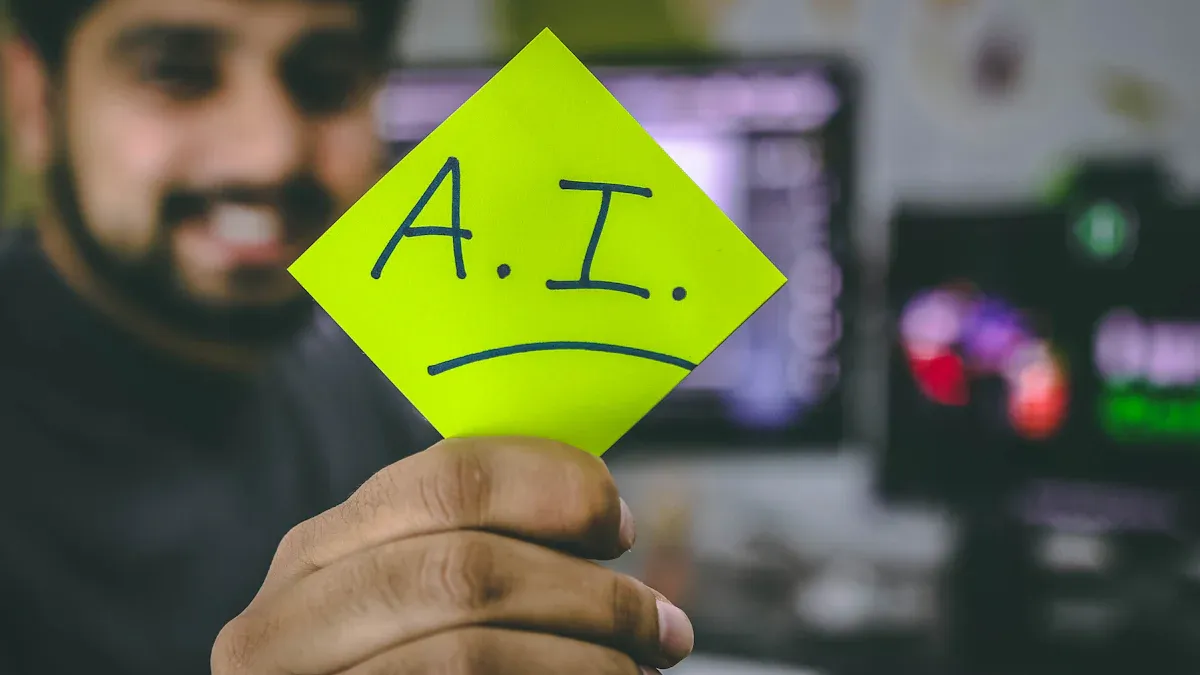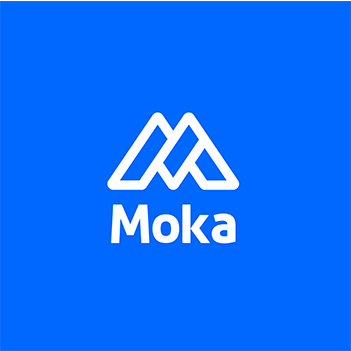How AI Is Revolutionizing Talent Pipeline Management Strategies

AI in Talent Pipeline Management is transforming how you manage talent pipelines, making processes faster and more efficient. By automating repetitive tasks, AI in Talent Pipeline Management allows you to focus on strategic decisions. For example, organizations using AI in Talent Pipeline Management to screen resumes have reduced their time to hire by up to 50%, while improving the quality of selected candidates by 20%. These tools also analyze vast amounts of data, helping you identify the best talent for your team.
AI in Talent Pipeline Management goes beyond efficiency. It enhances recruiting by providing insights into candidate behaviors and trends. This helps you make informed decisions and optimize your strategies. With 76% of HR professionals believing AI in Talent Pipeline Management will significantly impact their field, adopting these tools gives you a competitive edge in talent management.
Key Takeaways
AI makes hiring easier by handling boring tasks automatically. This lets HR focus on important choices.
Using AI can cut hiring time by 75%, making it faster and better.
AI improves how companies talk to candidates, giving them a better experience.
AI tools help find and remove unfairness in hiring, supporting diversity.
AI gives useful data to improve hiring plans and results.
Core Applications of AI in Talent Pipeline Management

AI in Talent Sourcing
Automating candidate searches and sourcing.
AI-powered technology transforms how you source talent by automating time-consuming tasks. Instead of manually sifting through resumes or job boards, AI recruitment tools streamline the process. These tools analyze vast datasets to identify candidates who match your specific requirements. For instance, AI accelerates the identification of candidates in specialized fields like biotech and cybersecurity, ensuring you find top talent faster. Companies like Unilever have reported a 75% reduction in time-to-hire by integrating AI-driven recruiting tools into their talent acquisition strategies.
Identifying passive talent with AI-driven tools.
AI recruiting goes beyond active job seekers. It identifies passive talent by analyzing social media profiles, professional networks, and online activity. This approach helps you connect with skilled professionals who may not be actively searching for jobs but align with your needs. By leveraging AI-driven strategies, you can expand your talent pipeline and stay ahead in competitive industries.
AI in Candidate Screening
Streamlining resume analysis with AI.
AI in recruitment simplifies resume screening by automating the analysis process. AI-powered screening tools evaluate resumes for skills, experience, and cultural fit, reducing the time spent on manual reviews. Compared to traditional methods, AI job matching achieves an 85% accuracy rate and shortlists candidates in just 10 minutes. This efficiency allows you to focus on engaging with the most qualified candidates.
Predictive analytics for matching candidates to roles.
AI-enhanced screening uses predictive analytics to match candidates to roles where they are most likely to succeed. By analyzing large volumes of data, AI identifies patterns that help you make informed decisions. For example, IBM's Watson Recruitment system uses predictive analytics to improve hiring quality and save up to 30% of the time spent on candidate selection. This ensures you place the right talent in the right roles, boosting overall performance.
AI in Candidate Engagement
Enhancing communication with AI-powered chatbots.
AI-powered recruiting tools improve candidate engagement by streamlining communication. Virtual assistants guide candidates through the recruitment process, answering questions and providing updates in real time. Automated but personalized email sequences keep candidates informed at every stage, enhancing their experience. This approach not only saves time but also ensures candidates feel valued throughout the process.
Personalizing candidate experiences through AI.
AI-driven strategies enable you to create personalized candidate experiences. By analyzing data on skills, experience, and career aspirations, AI matches candidates with roles that align with their goals. This personalization improves satisfaction and engagement, with candidates reporting a 30% higher satisfaction rate when AI tools are used. By prioritizing personalized candidate experiences, you can build stronger connections with potential hires.
AI in Workforce Planning
Using AI for strategic workforce forecasting
AI transforms workforce planning by providing predictive analytics that help you anticipate future talent needs. Instead of relying on guesswork, you can use AI to model scenarios and create data-driven strategies. For example, AI tools analyze trends in hiring, reskilling, and retention to help you prepare for upcoming challenges. This approach ensures your organization stays ahead in a competitive market.
AI also forecasts outcomes like turnover rates and recruitment success. By interpreting talent analytics, it enables you to allocate resources effectively and make proactive decisions. For instance:
AI provides real-time insights into skills development, helping you manage talent pools more effectively.
It identifies inefficiencies in your workforce, allowing you to maximize productivity.
Personalized development plans created with AI boost employee engagement and retention.
These capabilities position AI as a strategic partner in workforce planning, empowering you to make informed decisions that align with your long-term goals.
Supporting succession planning and internal mobility
AI plays a critical role in identifying high-potential employees for leadership roles. By analyzing performance, engagement metrics, and career trajectories, AI helps you pinpoint candidates who are ready to take on greater responsibilities. This insight allows you to create tailored leadership development plans, ensuring smooth transitions during leadership changes.
Platforms like Workday Talent Insights use AI to provide actionable data on workforce trends and performance. These tools help you forecast talent needs and optimize your organizational structure. For example:
AI centralizes key employee metrics, making it easier to develop a strong leadership pipeline.
It supports internal mobility by matching employees with roles that align with their skills and aspirations.
By leveraging AI, you can strengthen your succession planning efforts and foster a culture of growth within your organization. This not only enhances employee satisfaction but also ensures your workforce remains agile and future-ready.
Benefits of AI in Talent Pipeline Management
Improving Efficiency in Recruitment
Automating repetitive tasks to save time.
AI recruitment tools streamline repetitive tasks, allowing you to focus on strategic decision-making. These tools automate processes like resume screening, interview scheduling, and candidate communication. For example, AI-powered chatbots handle initial candidate queries, saving hours of manual effort. This automation not only reduces workload but also ensures consistency in your recruitment process.
Reducing time-to-hire with AI-driven processes.
AI significantly shortens the time-to-hire by optimizing various stages of the recruitment process. Companies like Unilever have achieved a 75% reduction in hiring time by using AI-driven strategies such as video interviews and gamified assessments. Similarly, IBM reported a 30% decrease in average hiring time through AI integration. The table below highlights the efficiency improvements AI brings to recruitment:
Evidence Type | Statistic |
|---|---|
Reduction in hiring times | 78% |
Increase in hiring quality | |
Decrease in turnover costs | Up to 50% |
Increase in candidate engagement | 95% reported by HireVue clients |

Enhancing Diversity and Inclusion
Addressing unconscious bias in hiring decisions.
AI in talent management helps reduce unconscious bias by anonymizing candidate information during the screening process. This ensures evaluations focus on skills and qualifications rather than personal details. For instance, 68% of recruiters believe AI can minimize unintentional bias in recruitment decisions. Companies like Google use AI to assess recruiting performance, ensuring fair and equitable hiring practices.
Promoting equitable hiring practices with AI.
AI-driven strategies promote diversity by analyzing HR data to identify patterns of bias. These tools also detect biased language in job descriptions, enabling you to create inclusive messaging. Unilever improved diversity by using AI recruitment tools that assess candidates based on skills and potential rather than background. Research shows that organizations with higher diversity are 35% more likely to outperform competitors in profitability.
Data-Driven Decision-Making
Leveraging AI insights for better hiring outcomes.
AI provides data-driven insights that enhance your talent acquisition strategy. By analyzing workforce trends, AI helps you make informed decisions about hiring, training, and retention. Organizations using recruitment analytics are twice as likely to improve hiring outcomes compared to traditional methods. This approach leads to better decision-making and higher employee satisfaction.
Optimizing talent pipelines with real-time analytics.
AI-powered analytics optimize your talent pipeline by providing real-time insights. These insights align hiring and training decisions with business objectives, ensuring your organization remains competitive. For example, AI identifies skill gaps and suggests targeted training programs, helping you build a future-ready workforce. Key metrics like time-to-hire and quality-of-hire further refine your recruitment strategy, ensuring you attract top talent.
Challenges and Ethical Considerations of AI in Talent Management
Addressing Bias in AI Algorithms
Understanding and mitigating algorithmic bias.
AI systems can unintentionally perpetuate biases present in their training data. For example, algorithms may reflect societal stereotypes or engineers' personal beliefs, leading to unfair outcomes. A notable case involved Amazon's AI recruiting tool, which showed bias against female candidates due to skewed data. To address this, you can reconfigure datasets to eliminate past biases and use equitable data sources. Advanced machine learning models can also focus solely on qualifications, ignoring protected characteristics like gender or ethnicity. Regular monitoring of AI decisions ensures fairness and helps identify problematic trends early.
Evidence Type | Description |
|---|---|
Algorithmic Bias | Algorithms can perpetuate existing biases due to biased datasets. |
Gender Discrimination | Gender stereotypes can lead to predictive bias against certain groups. |
Data Representation | Skewed datasets result in imbalanced performance for underrepresented groups. |
Ensuring fairness in AI-driven recruitment.
To ensure fairness, you should implement standardized assessments powered by AI. These tools evaluate candidates impartially, focusing on skills and experience. Chatbots can handle initial screenings consistently, reducing human bias. Additionally, reviewing AI-generated suggestions before making final decisions helps maintain accountability. Encouraging your team to report any biases they notice in AI systems fosters a culture of continuous improvement.
Data Privacy and Security
Protecting candidate data and ensuring compliance.
AI systems handle vast amounts of sensitive data, making robust security measures essential. Organizations using AI for data protection have reduced breach costs by $1.88 million on average. For example, a multinational bank used AI to update its data storage practices, ensuring compliance with global regulations. You can adopt similar strategies to safeguard candidate information and meet legal requirements.
Statistic | Description |
|---|---|
$4.6 million | Average cost of data breaches at organizations using AI. |
$1.88 million | Cost difference in breaches between organizations using security AI. |
60% | Compliance officers planning to invest in AI-powered RegTech solutions. |
Safeguarding sensitive information in AI systems.
AI systems must prioritize encryption and access controls to protect data. Regular audits can identify vulnerabilities and ensure compliance with regulations like GDPR or HIPAA. In healthcare, for instance, AI has been used to manage patient data securely, reducing the risk of breaches. By adopting similar practices, you can build trust with candidates and protect their privacy.
Balancing Automation with Human Interaction
Avoiding over-reliance on AI in recruitment.
While AI enhances efficiency, over-reliance can harm the candidate experience. Research shows that candidates value transparency and fairness in the hiring process. Automated systems providing real-time feedback improve satisfaction by creating a sense of engagement. However, you should identify tasks suitable for AI while reserving strategic decisions for human oversight. This balance ensures a fair and personalized approach.
Maintaining a human touch in candidate engagement.
AI can streamline communication, but human interaction remains vital for building trust. Candidates appreciate timely updates and personalized feedback, even if they are rejected. You can upskill your team to work alongside AI, ensuring they focus on meaningful interactions. Defining clear roles and responsibilities between AI and humans fosters collaboration and improves outcomes.

Implementing AI in Talent Pipeline Strategies
Choosing the Right AI Tools
Evaluating AI platforms for recruitment needs.
Selecting the right AI tools is essential for optimizing your talent management processes. Start by aligning the capabilities of AI platforms with your organization's recruitment goals. Look for tools that integrate human insights with AI efficiency to enhance decision-making. For example, Unilever uses AI-driven tools to conduct video interviews, objectively assessing traits like creativity and cognitive ability. This approach streamlines the recruitment process and ensures you identify top talent effectively. Additionally, prioritize platforms that utilize data-driven metrics to improve the quality of hires while reducing bias in hiring decisions.
Integrating AI with existing HR systems effectively.
To maximize the benefits of AI, ensure seamless integration with your current HR systems. Many organizations have successfully achieved this by leveraging AI recruitment tools. For instance, Unilever reduced its time-to-hire by 75% while improving diversity in hiring. Similarly, IBM's Watson Recruitment system decreased decision-making time, allowing HR teams to focus on high-value tasks. These examples highlight how effective integration can enhance both efficiency and inclusivity in talent acquisition. Evaluate your existing systems and choose AI tools that complement your workflows for a smoother transition.
Training HR Teams for AI Adoption
Upskilling HR professionals on AI tools and processes.
Empowering your HR team with the right skills is critical for successful AI adoption. Nearly 50% of HR professionals report that AI has become a higher priority in the past year. By prioritizing skill development, you enable your team to adapt to evolving technologies and drive innovation. Focus on training programs that teach HR professionals how to use AI tools effectively. A workforce that continuously learns is better equipped to leverage AI for talent acquisition and management. This approach ensures your organization remains competitive in an AI-driven landscape.
Encouraging collaboration between AI and HR teams.
Fostering collaboration between AI systems and HR professionals enhances relationship building with candidates. Over 60% of HR professionals believe AI can improve collaboration within their teams. Encourage your HR staff to work alongside AI tools, using them to handle repetitive tasks while focusing on strategic decisions. For example, AI can analyze candidate data, allowing HR teams to concentrate on personalized engagement and relationship building. This balance ensures a more human-centered approach to talent management.
Measuring the Impact of AI
Setting KPIs for AI-driven recruitment strategies.
Establishing clear KPIs helps you measure the success of your AI-driven talent acquisition strategy. Focus on metrics like time-to-fill, diversity rate of hired candidates, and retention rates. For instance, a global hospitality chain reduced attrition rates by 20% after implementing an AI-driven retention platform. Similarly, tracking the digital employee engagement score can reveal how effectively AI tools engage your workforce. These KPIs provide valuable data-driven insights to refine your recruitment strategies.
Continuously refining AI applications based on results.
AI systems thrive on continuous improvement. Use analytics to identify which stages of your hiring process are most effective. For example, tools like HireVue report a 95% increase in candidate engagement through AI-driven video interviews. Regularly review performance data to refine your AI applications and address any inefficiencies. This iterative approach ensures your talent pipeline remains optimized and aligned with organizational goals.
The Future of AI in Talent Management

Emerging Trends in AI Recruiting
AI-powered video interviews and assessments
AI-powered video interviews are transforming talent acquisition by enabling faster and more objective evaluations. These tools analyze facial expressions, speech patterns, and cognitive responses to assess candidates' suitability for roles. For example, Unilever reduced its time-to-hire by 75% using AI-driven video interviews, showcasing the efficiency of this approach. You can use these tools to streamline your recruitment process while maintaining fairness and consistency.
AI assessments also enhance talent management by providing data-driven insights into candidates' skills and potential. Platforms like HireVue use predictive analytics to evaluate traits such as creativity and problem-solving ability. This ensures you identify top talent while minimizing bias. By adopting AI-powered assessments, you can improve hiring outcomes and build stronger talent pipelines.
Predictive analytics for long-term workforce planning
Predictive analytics is revolutionizing workforce planning by forecasting HR outcomes like turnover rates and recruitment success. AI-driven workforce analytics provide actionable insights that help you make strategic decisions. For instance, IBM Watson Talent Insights uses predictive models to identify key personnel trends, enabling you to plan for future talent needs effectively.
These tools also optimize talent management by analyzing billions of data points to predict workforce trends. Entelo, for example, automates talent sourcing and recruitment, enhancing efficiency and accuracy. By leveraging predictive analytics, you can align your workforce strategies with organizational goals and stay ahead in a competitive market.

AI as a Strategic Partner in Talent Management
Preparing for AI-driven changes in HR roles
AI in talent management is reshaping HR roles by automating routine tasks and enabling strategic decision-making. Jeanne Meister, a global HR consultant, explains:
“It won’t be a zero-sum game. Some occupations will shrink, some will grow, and others will evolve with new roles, reskilling, and job redesign. Certain tasks in recruiting and HR service centers will become automated, but the largest amount of change will be in the evolution of roles.”
You can prepare for these changes by upskilling your HR team and fostering collaboration between AI systems and human professionals. This ensures your organization adapts to evolving technologies while maintaining a human-centered approach to talent management.
Embracing AI to build future-ready talent pipelines
AI empowers you to build future-ready talent pipelines by optimizing recruitment and workforce planning processes. Nearly half of HR professionals prioritize AI in talent management, with 60% expressing optimism about its effective use. By integrating AI tools into your strategies, you can enhance relationship building with candidates and improve hiring outcomes.
AI also supports long-term planning by identifying skill gaps and suggesting targeted training programs. This ensures your workforce remains agile and competitive. As the AI recruitment industry grows, with a projected market size of $1,119.8 million by 2030, embracing AI will position your organization for success in the future of talent management.
AI in talent pipeline management has revolutionized how you approach recruitment and workforce planning. Its ability to automate tasks, enhance decision-making, and improve diversity ensures you stay ahead in a competitive market. By adopting AI, you can streamline processes and build stronger connections with candidates. The impact of AI will continue to grow, shaping the future of HR with innovative tools and strategies. Embrace this transformation to create a future-ready workforce and maintain your competitive edge.
The journey toward AI-driven talent management starts with your willingness to innovate and adapt.
FAQ
What is AI in talent pipeline management?
AI in talent pipeline management uses artificial intelligence to streamline recruitment processes. It automates tasks like sourcing, screening, and engaging candidates. You can also use AI to analyze data, predict workforce trends, and improve hiring decisions.
How does AI improve diversity in hiring?
AI reduces unconscious bias by anonymizing candidate data and focusing on skills. It also detects biased language in job descriptions. By using AI, you can create fairer hiring practices and build a more inclusive workforce.
Are AI tools expensive to implement?
AI tools vary in cost. Many platforms offer scalable solutions based on your needs. Start small with affordable tools and expand as you see results. Investing in AI often saves money by reducing hiring time and improving efficiency.
Can AI replace HR professionals?
AI supports HR professionals but doesn’t replace them. It handles repetitive tasks, allowing you to focus on strategic decisions and personal interactions. Combining AI with human expertise creates a balanced and effective talent management strategy.
How do I choose the right AI tool for recruitment?
Evaluate your recruitment goals and existing HR systems. Look for tools that integrate seamlessly and offer features like predictive analytics or bias reduction. Research case studies and user reviews to find a solution that fits your organization’s needs.
See Also
Revolutionizing Talent Search Through AI-Driven Recruitment Platforms
Enhance Your Hiring Efficiency With an Advanced ATS Solution
Streamlining Talent Acquisition Through ATS and LinkedIn Collaboration
Optimizing Candidate Pipelines Using an Effective ATS Tool
Innovative Recruitment Solutions: MokaHR's Approach to Talent Acquisition
From recruiting candidates to onboarding new team members, MokaHR gives your company everything you need to be great at hiring.
Subscribe for more information

